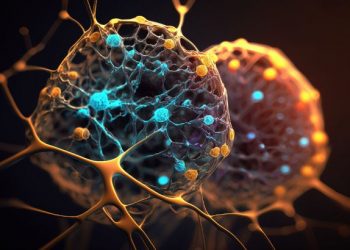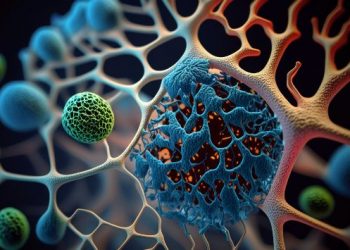Sarcoma Symptoms
Sarcoma symptoms vary depending on where the tumor is located. Most often, the first sign is a painless lump. As the sarcoma grows, it may press against nerves or muscles and cause pain.
Bone sarcoma pain can be mistaken for growing pains, especially in young people. That's why it's important to see a doctor if you have pain that doesn't go away.
Lumps or Masses
Sarcomas are rare cancers that start in tissues that connect, support and surround other body structures and organs. These include fat, muscle, blood vessels, deep skin tissue and tendons. Bone sarcomas are covered separately. Most soft-tissue sarcomas are painless and grow slowly, often without causing symptoms at first. They may feel like a rounded mass beneath the skin. They can grow around nerves and cause them to change in function or become compressed. They can also spread (metastasize) to other parts of the body, most commonly the lungs.
A sarcoma usually starts in an arm or leg, although it can begin in the trunk (torso) and abdomen. If it grows quickly, a patient may notice an enlarging lump that feels solid to the touch and can't be moved. In some cases, the lump will be painful if it presses on a nerve. If a sarcoma forms in or near a bone, it may also be painful.
Unlike some other cancers, most sarcomas don't seem to have any specific causes. However, certain risk factors increase a person's chance of getting them. These include radiation exposure and some genetic conditions, including Li-Fraumeni syndrome, Werner syndrome, von Hippel-Lindau disease and Gorlin syndrome.
People with these risk factors should see a doctor if they have a lump that doesn't go away. They may need tests to find out what the sarcoma is and whether it has spread.
These tests may include a CT or MRI scan, where special painless machines create pictures of the inside of your body. A PET scan is also sometimes used, where you're injected with a small amount of radioactive glucose (sugar) solution to help the cancer cells show up brighter on the picture. A biopsy is where some of the tissue is removed for examination under a microscope to confirm the diagnosis of sarcoma. A blood test can also be done to check how well your blood is working. This is especially important if you're having treatment for another condition, such as cancer, that can affect your blood cells.
Pain
Sarcomas are rare cancers that start in the body's soft tissues. These tissues connect, support, and surround other body structures, like muscle, fat, blood vessels, nerves, and the linings of joints. Most sarcomas grow in the arms or legs, although they can occur anywhere in the body.
Many people with sarcoma don't have any symptoms, especially in the early stages of the disease. But they can get worse over time, as the tumor grows and starts to press on nearby tissues or organs. This can cause pain, swelling, or trouble moving the affected area. Some types of sarcoma also affect the bones and can lead to a limp or difficulty walking.
If you notice a lump that grows over a short period of time, it is important to see your doctor. The doctor will examine the area and may take a tissue sample (biopsy) to check for cancer cells. The doctor might also order a CT or MRI scan to help find out how big the tumor is and what it's made of. A PET scan may also be used to make a picture of the tumor using a special injection of radioactive glucose, which helps the cancer cells show up better on the scan.
Some sarcomas are caused by abnormal genes or by certain types of viruses, such as human herpesvirus 8 (HHV-8), which causes Kaposi's sarcoma. People with a weakened immune system might be at higher risk for getting this type of sarcoma.
Sarcomas that grow in smooth muscle tissue are usually caused by a genetic mutation called K-ras or a problem with a protein called C-kit. These sarcomas tend to affect younger people and are more likely to be found in the arms or legs. Other sarcomas that grow in fat tissue, such as liposarcoma and leiomyosarcoma, can be found throughout the body.
Most types of sarcoma don't seem to be linked with any particular lifestyle or environmental factors. However, long-term swelling of the arms or legs, which is sometimes called lymphedema, can increase your chances of developing sarcoma in those areas.
Swelling
Swelling is one of the most common symptoms of sarcoma. It can cause pain in the affected area, as well as limiting movement of the leg or arm. The swollen area may also have a reddish or purple color, which can be caused by the tumor bleeding. In some cases, sarcoma can cause long-lasting swelling from a buildup of fluid in the blood vessels. This is called lymphoedema and can be caused by certain types of sarcoma, including angiosarcoma.
Swollen areas that are painful or that get progressively worse need to be seen by a doctor. They may be a sign of sarcoma, but they could also be a sign of other health problems, such as osteoarthritis or another bone disease.
Soft tissue sarcomas, which grow in the muscles, nerves, fat and other tissues of the arms and legs, are most common. These tumors can grow into the bones or nearby tissues, but they don't spread to distant parts of the body like bone sarcomas do. They can also be very slow-growing, which is especially true for dermatofibrosarcoma protuberans and undifferentiated pleomorphic sarcoma (UPS), which were once known as malignant fibrous histiocytoma or MFH.
Sarcomas that grow in the bones, called bone sarcomas, are less common. These tumors can grow in the bones of the legs or arms, as well as in the spine and other bone structures in the chest, pelvis and head and neck areas. Bone sarcomas can be hard to diagnose because they are very rare and share many of the same symptoms as other diseases.
To diagnose sarcoma, your healthcare provider will take your medical history and do a physical examination. They will feel for any lumps or bumps and order diagnostic tests to check for the type of sarcoma you have. These tests may include a CT scan or an MRI, which use special painless machines to scan your body and create pictures of the inside of your body. They may also do a PET scan, which uses a small amount of radioactive glucose to highlight cancer cells and other tissues. These tests and a sample of the tumor (biopsy) will help confirm the type of sarcoma you may have.
Discomfort
Though this is the rarest symptom, it can occur if a sarcoma grows and becomes so large that it presses against nerves or muscles in the area. The discomfort may be sharp or dull. It is important to tell your doctor about any lump or swelling that you feel as early on as possible, because if a sarcoma is diagnosed, it needs to be treated right away.
Sarcomas are not very common, and a lot of people don’t even notice them growing. They can grow in places that concentrate fat, muscle, nerves, fibrous tissues or deep skin tissues. They also can grow in bones and sometimes spread to the lungs.
People who have a painless lump should see their physician immediately, because it could be a sarcoma or it could be something else. It is possible for the cancer to be a lipoma, which is a benign (not cancerous) growth made of fat cells and not a tumor at all. The doctor will take the person’s medical history and carry out a physical examination of the lump.
They will look at the size of the lump and whether or not it is changing. They will also ask questions about any symptoms the person has been having. They will check for any signs that the tumor has spread, such as a fever or a cough.
If they think the sarcoma is cancer, the doctors will order some tests to find out how serious it is. These may include a blood test to measure the level of white and red blood cells. They will also do X-rays of the area and perhaps chest X-rays to see if the cancer has spread to the lungs.
The doctors will then need to do a biopsy, which involves taking some of the suspicious tissue for analysis under a microscope. A MRI scan, which uses magnetic fields to create images of the body, may be done as well. They may also use a PET scan, which uses a radioactive solution to highlight the areas with concentrated cancer cells. This test takes about 90 minutes and is a safe, quick way to check for cancer in the lungs, liver or kidneys.





















































